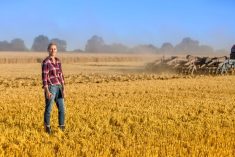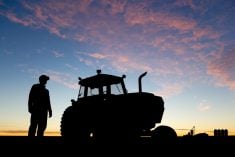Family farms were less complex when I was growing up and farming in the 1980s through the early 2000s.
Decisions were made in thousands of dollars, not millions. Summers were spent at the lake, not in the cab of a sprayer. It was a great way of life, one that shaped my attitudes and behaviours.
Now, three decades later, I barely recognize the landscape of modern family farms.
Read Also

What to consider when setting up farm-related business ventures
Things to consider before launching a farm-adjacent side business.
I spend a lot of my time consulting with farms that work in the tens of thousands of acres or that have multiple diversifications and revenue streams. This type of farm is what drew me back into the agricultural landscape and it is where the industry continues to move. But lately I’ve been hearing concerns that we have created “monsters” for the next generation.
And when you create monsters, they not only become hard to sell, they also become more difficult to leave to the next generation.
Succession has been a topic of discussion in agricultural circles for years, but there’s been little to no real advancement when it comes to transitioning the family farm.
And the issue of succession — one that many shy away from — has now become a necessity for an industry.
When the first discussions about generational transfers began, they were based on legacy, pride and the lifestyle that farming brought to family life.
This brings us to the elephant in the room. With today’s access to capital and cost of land, many farms have grown beyond the point of “built to sell.” In agriculture, we always believed that if the next generation did not want to farm, the current owner would liquidate or take their retirement plan (i.e., never leaving the homestead).
But the discussions now centre on who is large enough to buy a 20,000-acre farm worth $100 million. This set of buyers is dwindling and in today’s risk environment I would argue that you can count them on one hand. So, what happens when you have infrastructure and land holdings that are too extensive for an exit strategy?
Additionally, early-career farmers are faced with a steep learning curve. Not just the production or agronomy side of the business but the many other disciplines that today’s farms require. For instance, the Hebert Group, in partnership with Stratus Ag, recently surveyed 417 farmers across the country about the future of agriculture education. Almost 57 per cent ranked finance and accounting as a top priority for today’s farmers, followed by marketing/hedging, trades, operational efficiencies, entrepreneurship and human resources.
The modern farmer needs to be faster, more risk-tolerant and, in many facets, more mentally resilient than past generations. This is a daunting task for anyone — even more so for a generation faced with carrying on a monster-sized family legacy.
Regardless of the situation, succession and transition discussions must adapt to the new climate in agriculture. It is less about emotional ties and family legacy and more about business management and multi-generational wealth. Many will disagree, but today’s environment is full of monsters — farms that have been so successful that they have outgrown succession before a plan was put in place.
Instead of asking the next generation, “Do you want to farm?”, a better question would be, “Are you ready to tame the monster?”















